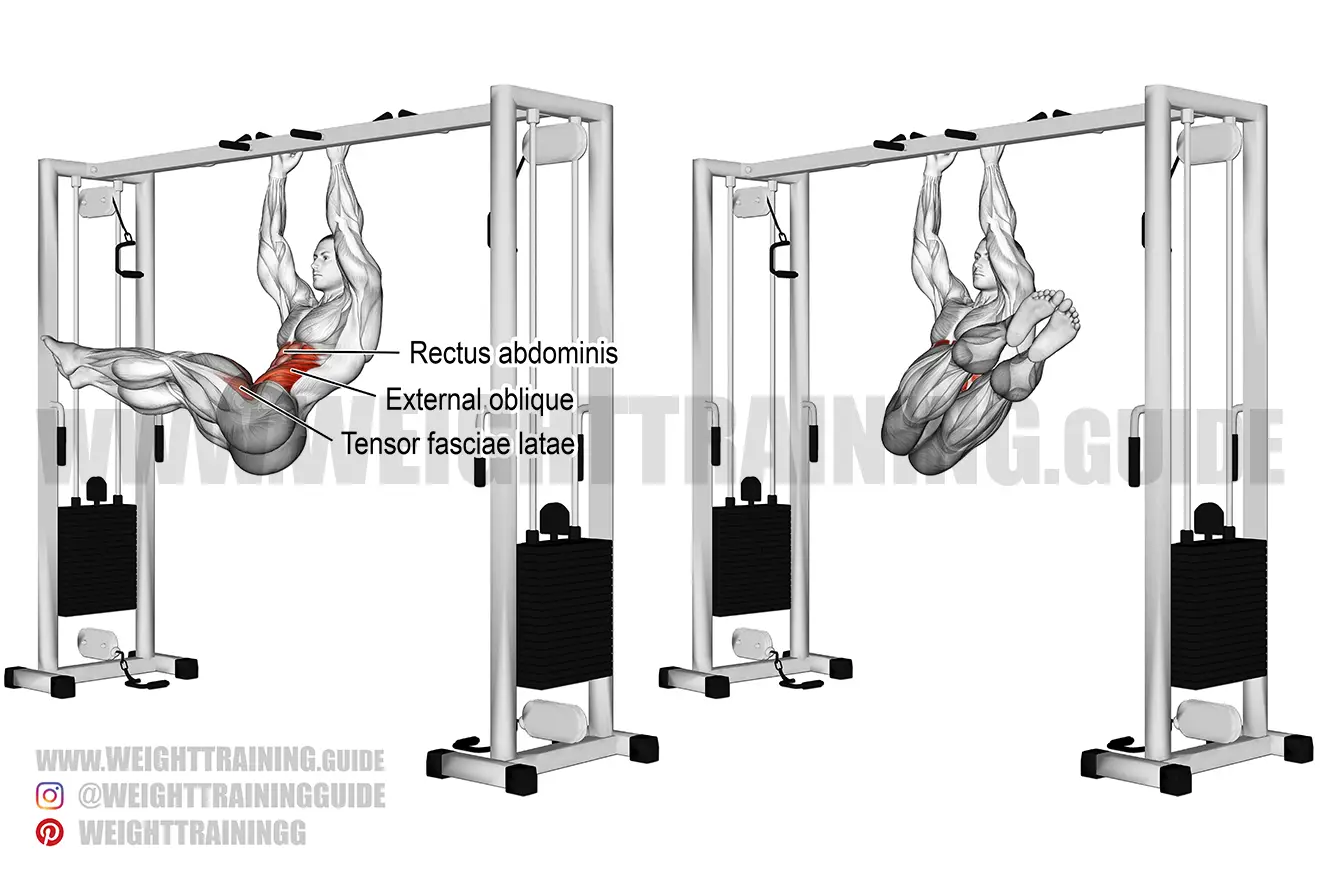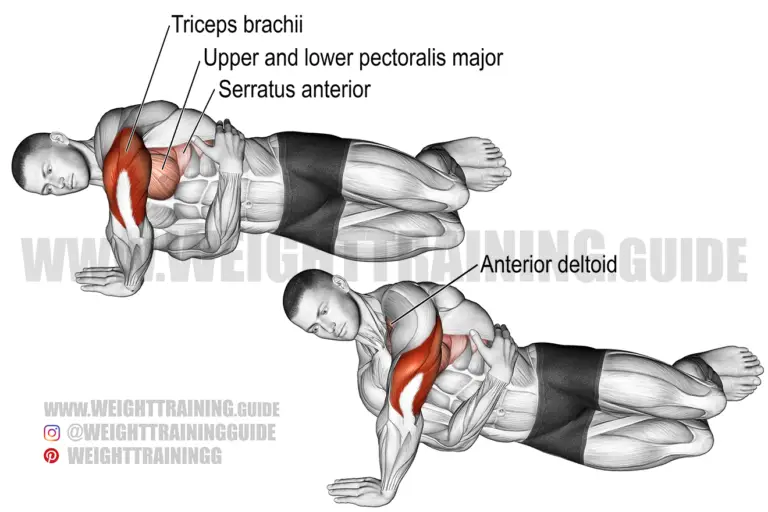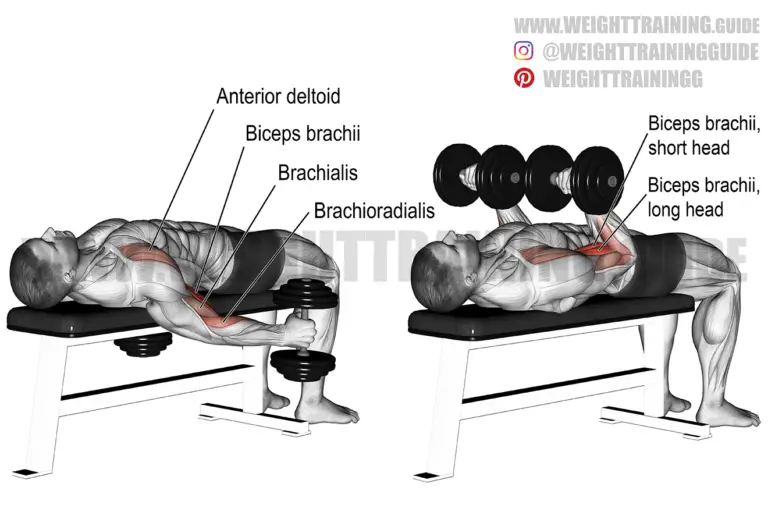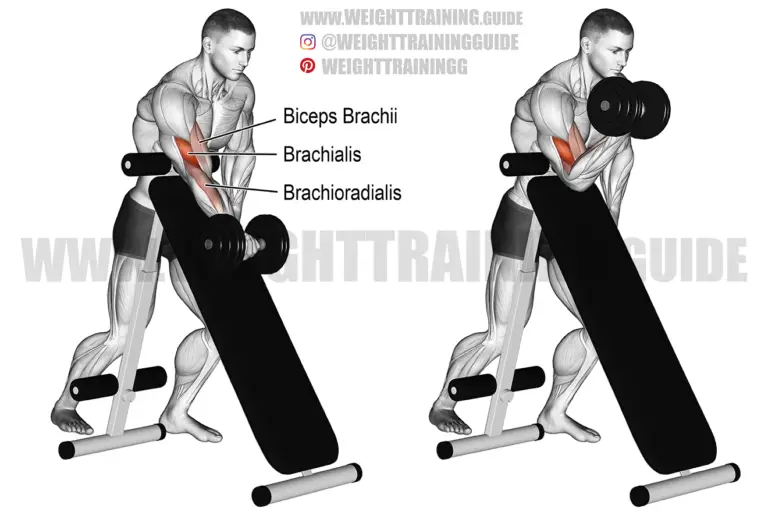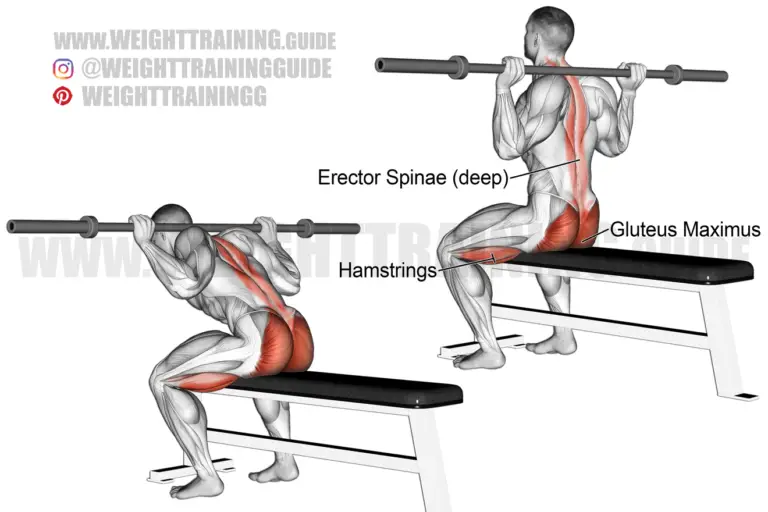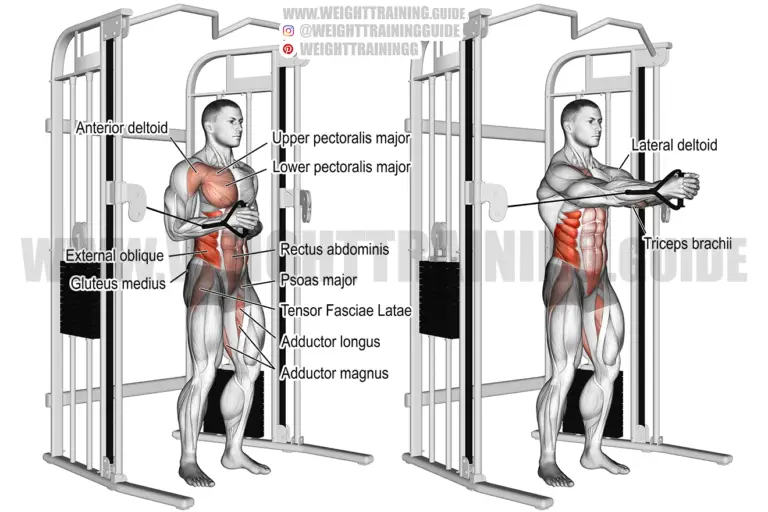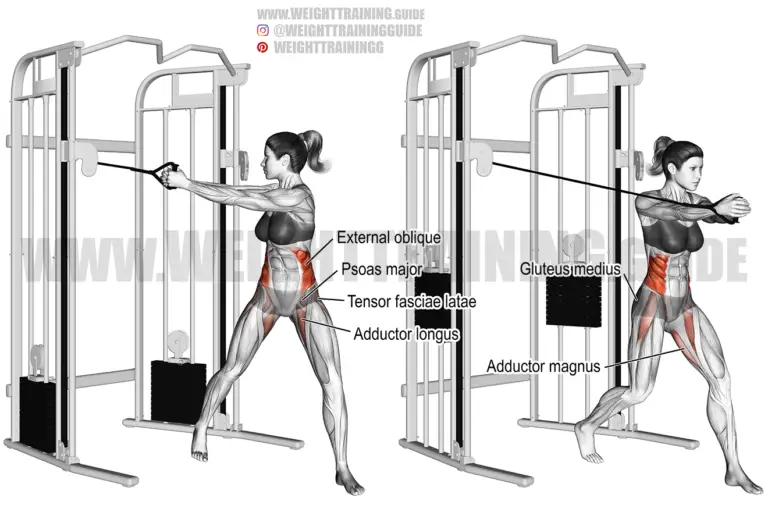Hanging windshield wiper
Exercise details
- Target muscles: Internal and External Obliques
- Synergists: Psoas major, Quadratus Lumborum, Iliocastalis Lumborum, Iliocastalis Thoracis
- Important stabilizers: Rectus Abdominis, Iliopsoas, Tensor Fasciae Latae, Sartorius, Rectus Femoris
- Mechanics: Isolation
- Force: Pull
Starting position
- With your legs straight and your feet together, hang from a high bar.
- Keeping your feet together, raise your legs until they are vertical by extending your shoulders and flexing your hips. Your back should be almost parallel with the floor.
Execution
- Gently and slowly lower your legs to one side in a circular motion.
- Reverse the motion and raise your legs back up to the starting position.
- Hold for a brief second.
- Gently and slowly lower your legs to the opposite side in a circular motion.
- Reverse the motion and raise your legs back up to the starting position.
- Hold for a brief second.
- Keep lowering your legs from one side to the other, making sure to pause at the top of the movement.
- Breathe naturally.
Comments and tips
- Do not lower your legs beyond feeling a mild stretch in your side.
- Keep the movement slow and under full control. Do not swing your legs or allow momentum to build up.
- Holding your legs vertically for a brief second at the top of the movement prevents momentum from building up. It also makes the target and synergistic muscles work harder.
- The hanging windshield wiper is an advanced exercise for strengthening your core and the twisting movement pattern of your body. Start with the lying bent-knee oblique twist and graduate to the hanging windshield wiper when ready.
Hanging windshield wiper video
This is a decent demonstration of the hanging windshield wiper, except he is moving too quickly and not pausing at the top of the movement.

